AudioCulture
The noisy library of New Zealand music
Te pātaka korihi o ngā puoro o Aotearoa
Graham McGregor
McGregor’s album The Real Karangahape Road is a joyous endeavour that reflects his 60-plus years playing folk music in Auckland, Wellington, Sydney and beyond. With his gruff, gutsy voice and rock solid acoustic-guitar playing, McGregor tackles songs by such folk icons as Papa Charlie Jackson, Eric Von Schmidt, Jesse Fuller, Papa Charlie McCoy, Woody Guthrie, and Jim Jackson.
He includes two good-humoured originals – the title track and ‘Grizzled Old Bugger’ – and covers ‘Other People’s Money’ by Gary Trotman, a younger figure on the Auckland folk scene. As always with McGregor the songs are performed with a huge sense of fun – no navel gazing here – and he’s backed by a consummate band of acoustic musicians who help fill his sound out.
For those of us who have enjoyed McGregor’s performances over the decades – I first heard him sing in public in the mid-1980s – it’s a treat having an album by a performer who exemplifies Kiwi folk music at its most rough and ready, good hearted and gregarious. McGregor is happy to actually be on disc and vinyl after all these years of only being heard as a live performer. But being a recording artist is not about to see him taking it easy; he still plays out some four nights a week at open mic nights, runs the Rafters folk club in the Unitarian church on Ponsonby Road and is always up for a song and a strum when like-minded musicians gather in living rooms or gardens.
That McGregor has never aimed at being a full-time professional musician is possibly why he still finds such joy in performing. And whenever he steps up to perform the pleasure he takes in making music is evident.
I was always interested in making music [and] got very interested in folk music while at school
“I was born in 1941 and I grew up in Wellington – Wadestown, Kilbirnie and then Brooklyn. I was always interested in making music and at school I befriended Robert Taylor – who played piano well and later ended up in Australia [note: not the Dragon guitarist]. I got hooked on the likes of Fats Domino and all the rock’n’roll guys. There was a radio programme called Cotton Eyed Joe that was on 2ZB which played stuff like Sun Records – Roy Orbison, Johnny Cash, Carl Perkins, Chuck Berry and some other of the Black guys. I got very interested in folk music while at school – Murdoch Riley, who went on to found Viking Records, was running the record department in Lamphouse, an electrical shop, and they had the best record bar in Wellington. Murdoch actually had a stereogram – one of the first in the country – and he got in a bunch of Folkways LPs and I was very lucky to get them. This enabled me to hear Lead Belly, John Lee Hooker, Lightnin’ Hopkins, Pete Seeger and an album of jug band recordings. I learnt jug band and blues songs from these Folkways albums – I particularly liked the female blues singers and I still sing some of their songs.
“I started off playing the ukulele and, by age 19, I started on guitar. I would go to The Balladeer, a folk coffee bar in Willis Street – it was a small place up the top of stairs run by Frank and Mary Fyfe that seated about 20 people. Frank basically ran the music and he and I ran the Wellington Folk Festival – Frank set it up and got me to look after the final night. The last one I did (in 1966) we used Wellington High school’s auditorium and we got 1200 people – we had an English folkie A.L. Lloyd as headliner. I found him interesting in some ways but he was very much trying to pioneer the treatment of drugs as a health issue, and at that time there weren’t the drug problems in New Zealand there were in the UK so he didn’t really click with us Kiwis.
“I bought a classical guitar because some touring musician I saw played a classical guitar and I went off to Sydney in 1960 and sang at an open mic in a bar – in New Zealand, music was in nightclubs but not in bars. The bars in New Zealand were terrible and the beer was worse. I did sing in nightclubs a couple of times in Wellington but nothing ever came of it. I got heckled by another singer who was drunk at the time – not a great start.
music was in nightclubs. The bars in New Zealand were terrible and the beer was worse
“I left Wellington to live in Sydney in 1962 and, through a comedy of errors, I ended up at the British Ex-Services Club and, from there, I met some English guys who had records that weren’t available in New Zealand so, from them, I managed to learn a wide variety of songs that weren’t yet standards. One of these songs was ‘San Francisco Bay Blues’ – it was written by Jesse Fuller but, back then, he hadn’t recorded anything at the time, this was learnt from Ramblin’ Jack’s LP.
“I used to play for three or four hours a night, just learning things. For a while I used to sing a couple of English bar songs. In Sydney I went to a concert with Josh White and Judy Collins and Bud & Travis and The Limelighters – I was so impressed by Josh and Judy. Josh was sort of a bridge into the blues, while Judy sang so clearly. I wanted to go to America, to Greenwich Village, but I never made it.
“After two and a half years in Sydney I decided to hitch to Darwin – it took me 10 days and the varnish of my guitar melted! If you turned up with a guitar in outback Australia in the 1960s you’d sit down in a pub and sing and end up with more beer lined up in front of you than you could ever drink. They told me, ‘last bloke to pass by with a guitar was some months ago!’
“I settled in Auckland in 1965 as that’s where the boat arrived. Also, through a fluke of circumstances, my mates from Wellington were living here. I came back on a terrible old tramp steamer, the Oriental Queen, and Barry Lett [art gallery founder] was a mate of ours and I stayed on his sofa for a while and got into the Auckland folk scene. The real scene was the Wynyard Tavern in Symonds Street – it was a cafe and, back then, people smoked excessively so I was always singing under a cloud of smoke. It was really good and I became a popular entertainer there – I ended up getting paid more than anyone else!
“I also got work from Fullers Entertainment – that was Phil Warren’s organisation. Phil was a good guy, treated me well, got me a job on TV – a programme called Town & Around, I would go in on a Friday and they’d give me a Herald and I’d write a topical song and perform it on that evening’s show. I’ve always tried to look for irony and humour but when they announced that President Johnson was coming to visit us they disliked the song I wrote about him – thought it too serious. That gig finished in 1968.
I thought I might be able to make a living playing music in Auckland but I was wrong
“I thought I might be able to make a living playing music in Auckland when I returned but I was wrong – I’ve always played what I want to, not playing replicas of other people’s songs. The folk scene was popular but it paid poorly and could be petty – I got banned from Poles Apart after mentioning to another attendee that I preferred the Wynyard Tavern! At that time David Skinner was the only Kiwi folk singer who got a recording contract. He had a classically trained voice and that’s what the record labels were looking for. Later there was The Hamilton County Bluegrass Band and they were really good. I’ve always been somebody doing my own thing and not really in any particular place. But I have to concede that I have been president of Titirangi Folk Club.
“I held various day jobs – I had been a primary school teacher in Sydney and found it too demanding. In Auckland the most notable was working on a work scheme digging up bones from Symonds Street cemetery. Then I worked on the freezing works at Southdown. I walked out there bare feet, waited the night and got a job – I was broke – and was there for the season. Then I got a job there as a personnel officer! I found that quite hard work as the management weren’t very modern for the 19th Century – and this was the 20th! So eventually I got the sack. All the time I was playing around and the Devonport Folk Club was a good one – John Sutherland said to me ‘come over’. There was an amazing Scots singer there called Pat Bowley and she was really good to me. And Devonport Folk Club still exists today!
“I was the only person I knew who didn’t take LSD and I didn’t enjoy marijuana and I was terrified of heroin – I wasn’t part of the hippie scene. I did know Tim Shadbolt through the local Labour Party but I never went to the Jumping Sundays in Albert Park. I flatted with David Mitchell, the well-regarded poet (Pipe Dreams In Ponsonby), and he was a very good reader and he ran a scene in the Globe Hotel where AUT is now and I was basically the house singer. I thought I was pretty good at holding a pack of drunks at 10pm at night and then, one night, Tim Shadbolt came along and he just took over the place – he was exceptional. He had the mana. Around this time I got a gig playing before strippers came on at parties and I was not what the audience had come to see.
“Because I was a friend of Barry Lett I had become part of the Auckland art scene – I knew Pat Hanley, Tony Fomison, Robert Ellis, Phil Clairmont, Richard McWhannell, Robin White and many others. Artists, architects, poets, musicians and bums! By the 1970s I was married and continued to do various no-account jobs until I ended up working as a postie and I lasted 27 years – it was really good as it enabled me to do other things like play music at night. The only problem was it stuffed all my joints and destroyed my carpal tunnel so I’ve had an operation on both hands. When I had the operation it meant I could use my left hand again.
IN the 1970s, interest in folk waned as young people all wanted to listen to rock bands
“Things changed across the 1970s as interest in folk waned as young people all wanted to listen to rock bands. “I got more involved in politics in the 1970s and 80s so cut back on playing out – I’d play at parties and funerals and with friends but not the clubs and pubs. I ended up being on the field in Hamilton during the Springbok tour and I was elected into the Mt Eden Borough council and served from 1983 to 1989.
“I had a friend, Brent Morrissey, who also was a postie and a folkie and a mate of his put up the money to get us a free recording session in 1993. We recorded a cassette where I had one side and Brent had the other. We called it The Meeting – sold it at gigs. Basically, at that time I started going back to the folk clubs and enjoyed doing so. Then the open mic nights developed across Auckland pubs earlier this century and that has really rejuvenated the scene. I’m probably the oldest of the scene. The open mic nights are where the energy is these days – they’re really good fun. The variety of musicians performing there is great – you meet all kinds of people, many different talents. One of whom, Chris Poipoi, sadly died aged only 62 in February. He had a lovely voice, was a lovely guy. I prefer them to folk clubs these days as there’s lots of energy and ideas and all ages. I always have a great time when I go out to sing. I’m not one of those folkies who think the song has to do all the work. It’s entertainment.
“Of the Auckland folk scene, The Bluegrass Club at the City Side Church on Mt Eden Road is still a good club. The Rafters Club in the Unitarian Church on Ponsonby Road is a good place – I took it over about 15 years ago as I was the last man standing. We meet once a month and it can be very quiet but we had Andrea Read play a few years ago and got 73 people (her mother Jean Read was another gifted folk singer). Of my contemporaries there was a guy called Max Winnie, a Wellington folkie who was a good friend and mentor of sorts. Jim Delahunty was another very interesting guy and my foremost mentor. Alan Young is still with us – as is Neil Finlay, who I met as a 16-year-old harp player.
“Making an album had always been a dream but it wasn’t until Holding Space Aotearoa approached me that I had the opportunity – they are Ema Barton and Grant Hewison, who work on climate change music. I met them via the open mic scene. I’ve been playing Jesse Fuller songs since the early 1960s and I got permission from Eric von Schmidt’s estate to change the words to his song. These are songs by artists that have lived with me all my life. I do write songs but only one every 10 years or so. The problem I have is, when I was growing up, people wrote songs for you. Back then I looked for good songs and I found them. I try and make everything personal so a lot of people who hear me think I’ve written all the songs!
I do write songs but only one every 10 years or so ... I looked for good songs and I found them
“Neil Baldock engineered and directed the [2022] sessions. He did a great job. Nick Brightwell plays guitar on it and we have played together for years, including going to Gore a few years ago to play the Gold Guitar Awards twice – he won the instrumental section three times – and he’s a master fingerstyle guitar. He’s studied it at Milwaukee University. Sam Loveridge just started joining me on fiddle when I’d play out – when he feels like it. He’s a very good singer-songwriter and he also plays with Jono Annandale as Permission To Speak – Jono did all the album’s artwork. Jim Lawless on mandolin is an old folkie. Gary Trotman is a fine bass player and he started writing songs and he has an album called Brand New Tradition – just him and a guitar. ‘Other People’s Money’ is an excellent song and Gary encouraged me to sing it. He plays bass for all sorts of people. The backing vocalists are pretty important too – Ema Barton, Jennifer Howarth, Claire Kendall, Tim Prier – I’ve known Jennifer and Jim Lawless via folk clubs for decades. They’re both in their seventies, the rest of the musicians featured are in their twenties and thirties.
“We recorded it all in two days at Devonport’s Depot Sound. It was really good fun. If you walk around with a vinyl people take you seriously! I played in Thames in the Thames Musicians Club last Saturday and I managed to take over the bar – everyone was listening. I’m very fortunate that I’ve always had a natural repartee with audiences. I’ve got to know many musicians on the folk scene over the decade and made many good friendships. I knew Graham Brazier quite well – saw him the first time he played in public. I sang a jug band song called ‘Going To Germany’ and the next week Graham and his mates were doing it much closer to the original. He was good at doing that kind of stuff and we were mates for life.
“A 1931 Gibson L2 was my only guitar for about 40 years – I bought it from Willow Macky, a poet and a songwriter, and she’d bought it from a guy going off to the Second World War. It was in her wardrobe and had nylon strings on it. I bought it and put steel strings on it. Gordon Zettwitz [luthier] glued the back brace down – he said every 40 years or so a guitar needs this and told me only to play it with light-gauge strings. After me playing it for 40 years it needed various bits of work and the young Australian guitarist and songwriter Liam Gerner was very enthusiastic about it, so now he owns it and has got the work done. It’s fantastic to know it’s being played out there. Liam’s a very good guitarist while I just play what I need to. Today I play a 12-string guitar – it marks you as different and gives an extra depth. My 12-string was made by Steve Barkman – made from Brent Morrissey’s mother-in-law’s bed! It’s mahogany. Brent had a mandolin made out of that bed and it sounds so good that’s why I wanted a guitar made from it. As long as I can keep playing I certainly aim to do so.”
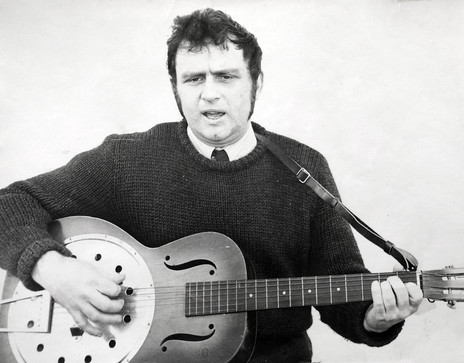
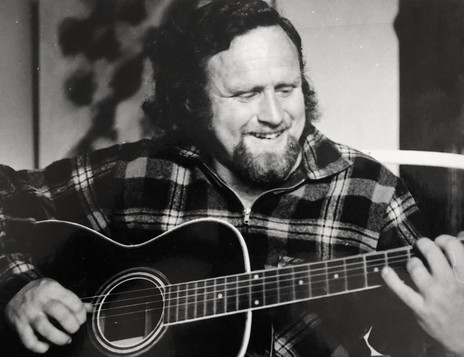
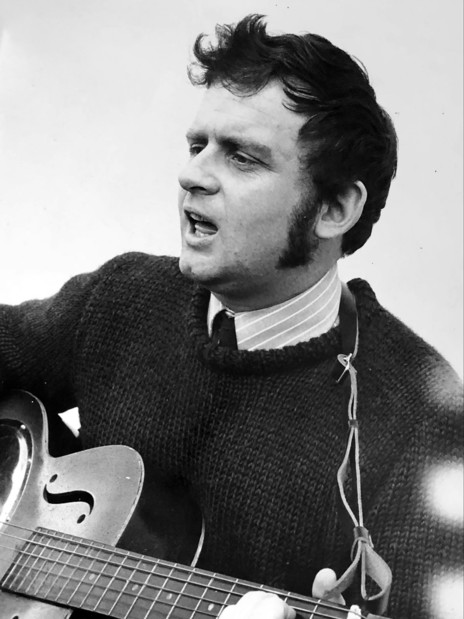
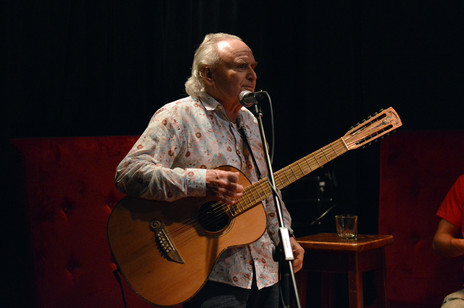
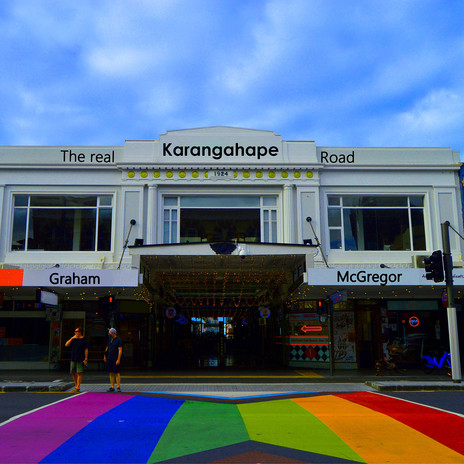
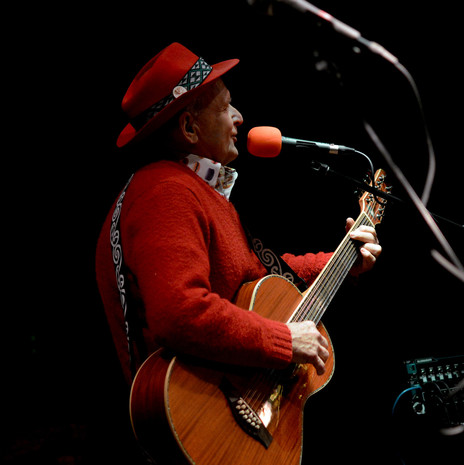
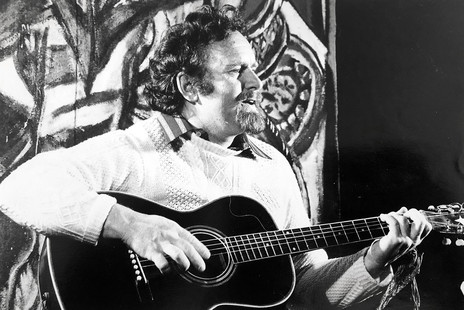
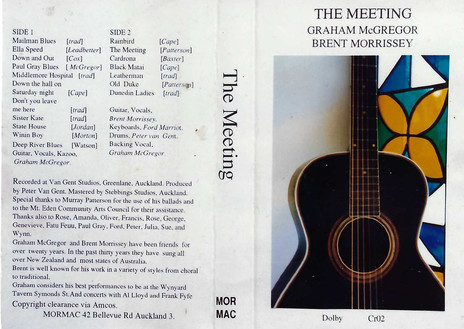
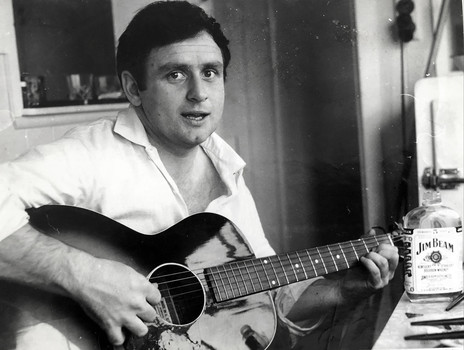
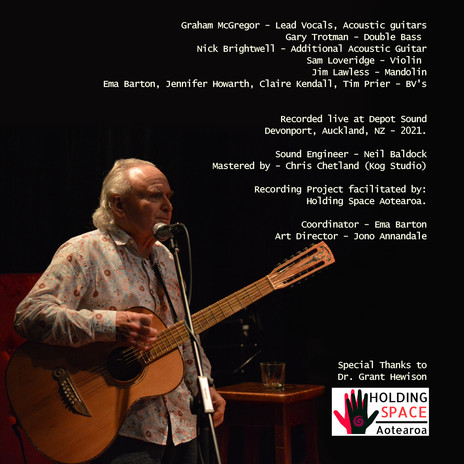
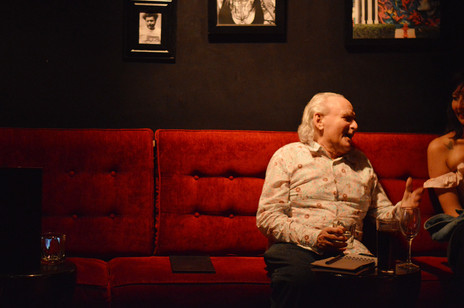
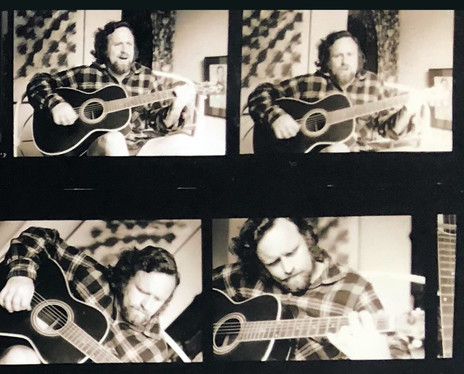
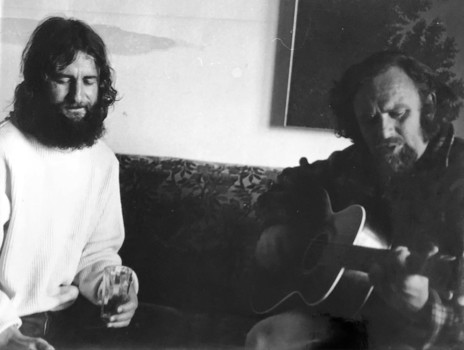
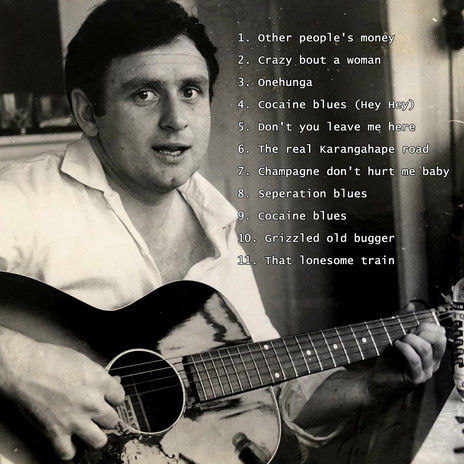
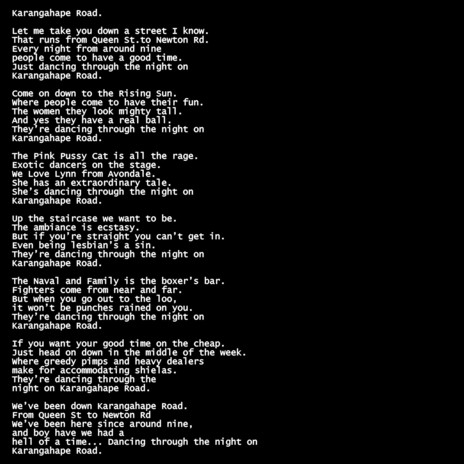
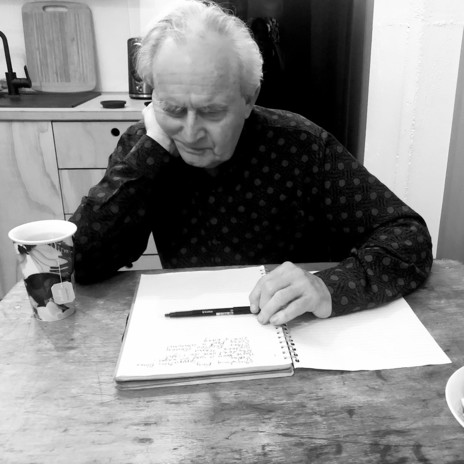
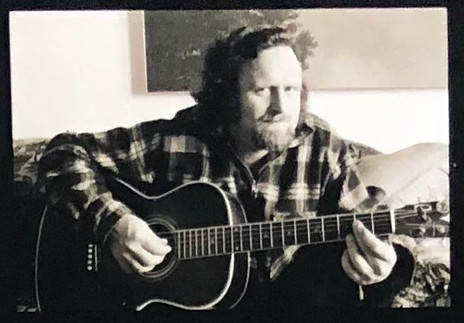
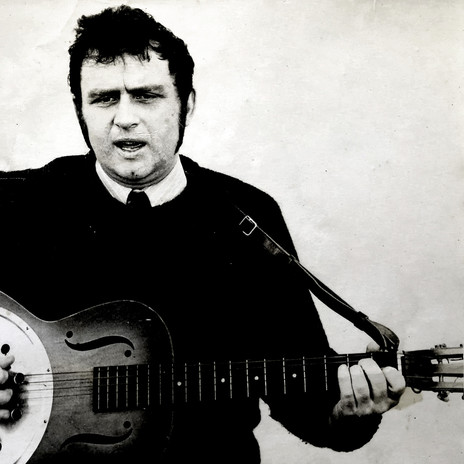
Visit our sister site
NZ On ScreenMade with funding from
NZ On Air
